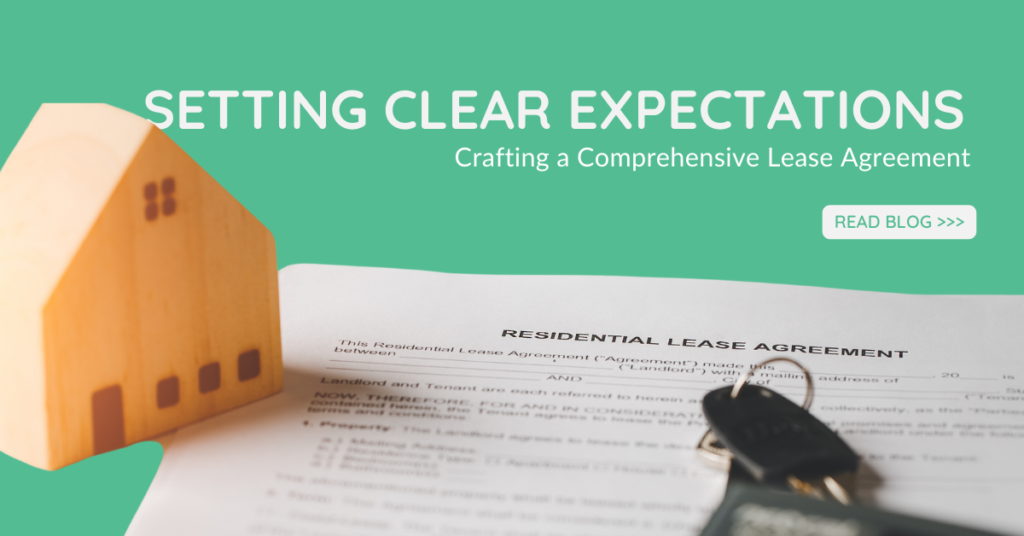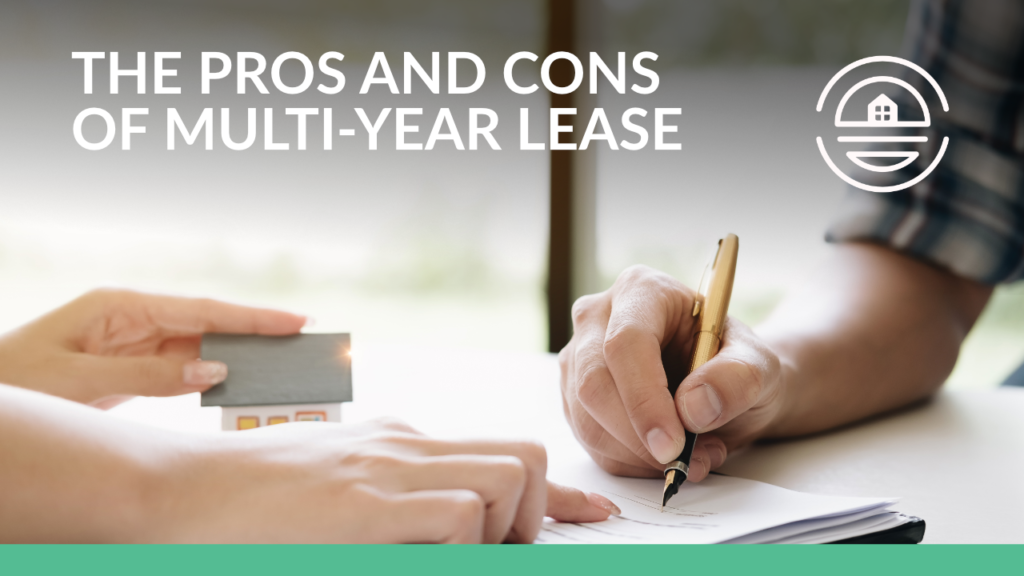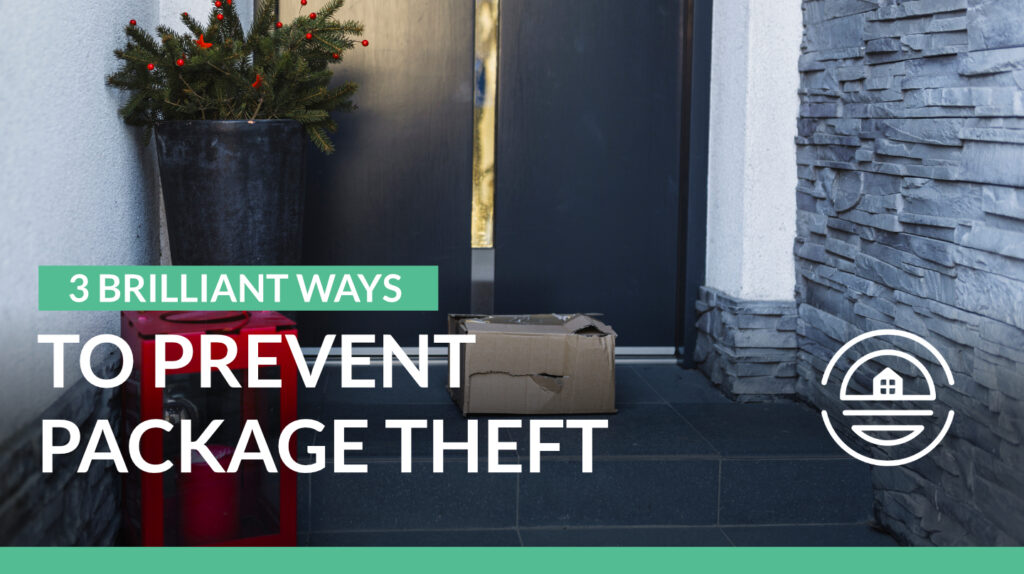Setting Clear Expectations: Crafting a Comprehensive Lease Agreement
Reading Time: 4 minutesFinding a great tenant is only half the battle. Once you’ve identified the perfect resident, solidifying the terms of their tenancy with a clear and comprehensive lease agreement is crucial. This document serves as the foundation for a successful landlord-tenant relationship, outlining expectations, responsibilities, and protections for both parties. A well-crafted lease agreement benefits everyone….

Finding a great tenant is only half the battle. Once you’ve identified the perfect resident, solidifying the terms of their tenancy with a clear and comprehensive lease agreement is crucial. This document serves as the foundation for a successful landlord-tenant relationship, outlining expectations, responsibilities, and protections for both parties.
A well-crafted lease agreement benefits everyone. It minimizes misunderstandings, protects the interests of both parties, and lays the groundwork for a positive and respectful landlord-tenant relationship. So, how do you ensure your lease agreement is clear and covers all the bases?
Table of Contents
Key Elements of a Comprehensive Lease Agreement

To ensure a smooth rental experience for both you and your tenants, your lease agreement should address the following essential aspects:
- Basic Information: Start with the fundamentals – the names and contact information of both parties, along with a clear description of the property being leased (address, type, and size).
- Lease Term: Define the start and end date of the tenancy. Include information on lease renewal options, if applicable, and any associated fees.
- Rent and Payment: Clearly state the monthly rent amount, due date, and any late fees that may apply. Specify accepted payment methods (online portals, checks, etc.) to avoid confusion.
- Security Deposit: Outline the security deposit amount and the terms for its return at the lease end. Detail what deductions might be made for any damages beyond normal wear and tear.
- Tenant Responsibilities: This section details how tenants are expected to care for the property. This might include maintaining cleanliness, handling pest control, undertaking minor repairs, and being mindful of noise levels and guest policies. Additionally, clarify whether subletting is allowed and under what conditions.
- Landlord Responsibilities: Outline your obligation to provide a habitable living environment and handle major repairs and maintenance. Specify your right to access the property for repairs or emergencies under reasonable notice.
- Pet Policy: Be upfront about whether pets are allowed. If so, the lease should specify any breed restrictions, the number of pets permitted, and any associated pet fees.
- Termination Clause: This clause details the procedures for early termination by either party. It should include the required notice period and any potential penalties. Additionally, outline the eviction process for lease violations.
- Additional Clauses: Depending on your specific property and local regulations, you might want to include additional clauses in your lease agreement. These could cover parking arrangements, lead paint disclosure (if applicable), limitations on modifications to the property, and a preferred method for resolving any disputes that may arise during the tenancy.
Crafting Clarity: Tips for a Smooth Read

Your lease agreement is a vital document, but it shouldn’t feel like deciphering a legal code. Here are some tips to ensure your lease agreement is clear, concise, and easy to understand:
Plain Language is Key
Ditch the legalese! Opt for straightforward language that anyone can comprehend. Avoid technical terms or confusing sentence structures. If a specific term is necessary, define it clearly within the document itself.
Define Your Terms
Even seemingly common terms can have specific meanings in a lease agreement. For example, “habitable condition” might have a legal definition that differs from your everyday understanding. To avoid confusion, provide clear definitions for any technical terms used throughout the lease.
Headings are Your Ally
Structure is key! Organize your lease agreement with clear headings and sections. This allows for easy navigation and helps tenants quickly find the information they need. Think of using headings like “Rent and Payment,” “Tenant Responsibilities,” or “Termination Clause.”
Bullet Points Save Time
Bullet points are your friends when it comes to highlighting key points and making the lease easier to read. Use them to list expectations, responsibilities, or prohibited activities. This format makes it visually clear and allows for quick scanning of important information.
Proofread
This might seem obvious, but a typo or unclear sentence in your lease agreement can lead to future misunderstandings. Before finalizing any lease agreement, take the time to thoroughly proofread the document yourself. Consider having another property manager or legal professional review it as well.
Conclusion
While a lease agreement might seem like just a formality, it’s a valuable tool that promotes a positive and predictable living arrangement. Taking the time to ensure both you and your landlord are on the same page from the outset fosters a sense of security and minimizes the potential for disagreements.
So don’t be afraid to ask questions, clarify uncertainties, and work together to create a lease agreement that benefits everyone involved. After all, a little planning now can pave the way for a harmonious and enjoyable rental experience.
Rest Easy with Green Ocean Property Management
At Green Ocean Property Management, we understand the importance of clear communication and setting realistic expectations. Our team of experienced property managers is here to guide you through the lease agreement process, ensuring all your questions are answered and your needs are met. Whether you’re a tenant seeking a stress-free rental experience or a landlord looking for peace of mind, Green Ocean Property Management can help.
Contact us today to learn more about our comprehensive property management services and how we can help you navigate the world of rentals with confidence.
The Pros and Cons of Multi-Year Lease
Reading Time: 3 minutes A lease is an agreement between, the landlord or the property manager, and the tenant. One of the most important aspects of it is the duration. Typically in Massachusetts, we have a 12-month lease, but we want to make sure that our leases will always end anywhere between June, July, August, or September. Sometimes,…
3 Brilliant Ways To Prevent Package Theft
Reading Time: 2 minutes Package theft is rampant nowadays, but that doesn’t mean you can’t prevent it from happening to you and your tenants. In this article, we will be covering three affordable ways to protect you and your tenants from having packages being stolen at your property. Tip #1 – Good lighting There shouldn’t…
Quick and Efficient Property Maintenance Using Property Meld
Reading Time: 3 minutes It takes an entire team to keep any property well-kept. That is why Green Ocean Property Management uses Property Meld to ensure all members of that team – from owners, vendors, residents, technicians, and us, your property managers – stay on track under one platform to provide a quick and efficient property maintenance…







